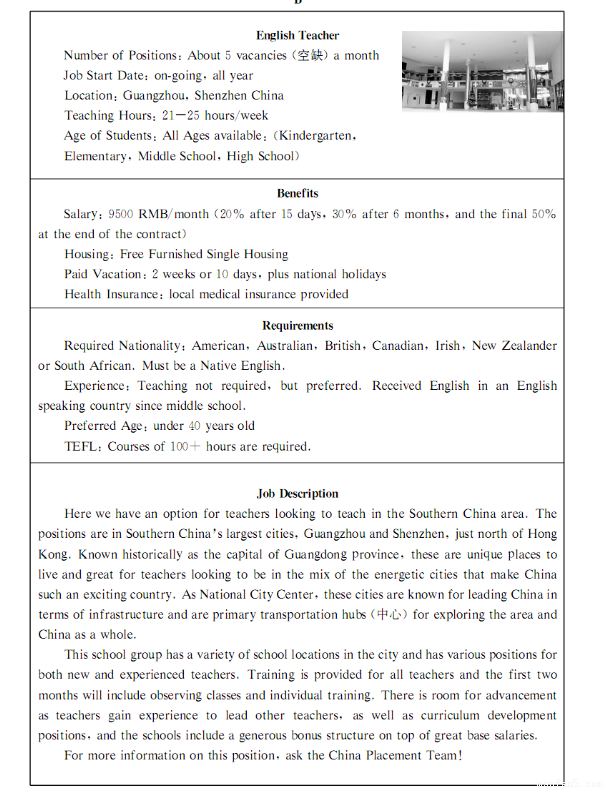题目内容
Nino Hernandez, who ________ only 10kg and is regarded as the world’s shortest living man, has not grown since he was 2 years old.
A. weighed B. had weighed C. weighs D. has been weighed
C

任务型阅读(共10小题;每小题1分,满分10分)
请认真阅读下列短文,并根据所读内容在文章后表格中的空格里填入1个最恰当的单词。(Reuters) - A U.N. climate deal due to be agreed in Copenhagen at talks from December 7-18 may fall short of a legally binding(有约束力的) agreement. If Copenhagen fails to live up to hopes of a strong agreement to slow global warming, what are the reasons and who risks blame? The following are some of the candidates:
● Decline in economy distracted(分散) focus from climate change after the world agreed in Bali, Indonesia, in 2007 to work out a new U.N. agreement by December 2009. Rich nations have put billions of dollars into green growth as part of recovery packages but, when unemployment at home is high, find it hard to promise extra money for developing countries. The slowdown in industrial output means a brief fix -- greenhouse gas emissions(排放) are likely to fall by as much as 3 percent this year.
● Many delegates at U.N. talks have given up hope that the United States, the number two emitter after China, will agree legislation(立法, 法律) to limit carbon emissions before Copenhagen. The US is the only industrialized nation outside the Kyoto Protocol(京都协议书) for cutting greenhouse emissions until 2012. Many countries welcomed President Barack Obama's promises of doing more to fight climate change when he took office in January but hoped for swifter action.
● Developing nations accuse the rich of repeatedly failing to keep promises of more aid. Few developed countries live up to a target agreed by the U.N. General Assembly in 1970 to give 0.7 percent of their gross domestic product in development aid. Other plans, such as the Agenda 21 environmental development plan agreed in 1992, have fallen short.
● Most rich nations are promising cuts in greenhouse gas emissions well short of the 25-40 percent below 1990 levels by 2020, which are needed to avoid the worst of climate change. Overall cuts promised by developed nations total between 11 and 15 percent. Best offers by countries including Japan, the European Union, Australia and Norway would reach the range.
● More than 90 percent of the growth in emissions between now and 2030 is set to come from developing nations -- with almost 50 percent from China alone, U.S. climate envoy Todd Stern said this week. "No country holds the fate of the earth more in its hands than China. Not one," he said. China and India say they are slowing the growth of emissions but raising living standards is more important. So burning more energy is unavoidable -- as industrialized nations have done for 200 years.
● 2008 was the 10th warmest year since records began in the mid-19th century. The warmest was 1998, when a strong El Nino event in the eastern Pacific disrupted(使混乱) weather worldwide. That has led some to argue that global warming is slowing even though the U.N.'s WMO(世界气象组织) says a long-term warming trend is unchanged.
● People have been slow in changing lifestyles to use less carbon. Simple choices like taking more public transport, using less heating or air conditioning, even changing light bulbs can help if millions of people act.
Who's to blame if U.N. climate deal falls short?
| Possible candidates | Supporting Details |
| __71___downturn | ● Faced with the______72____ rising unemployment, rich countries fail to give more aid to developing ones. ●____73_____industrial output brings about a temporary relief from the pressure of greenhouse gas emissions. |
| United States | ● It’s the only industrialized country outside the Kyoto Protocol. ● Immediate____74____ was expected to be taken by President Obama to fight climate change. |
| Rich-Poor divide | ● Developed nations are____75____ by the poor for repeatedly breaking promises of aid. |
| Developed nations | ● There is a huge ____76____between the overall cuts promised by developed nations and those required to avoid climate catastrophe. |
| Developing nations | ● The increase in emissions from developing nations ____77____for 90% between now and 2030. ● Developing nations need to be given priority to raising living standards by burning more ___78____. |
| The weather | ● The worldwide disorder caused by El Nino has __79__some people into believing that global warming is slowing. |
| The public | ● People should be _80__to change lifestyles to use less carbon. |
 68.Where does El Nino often appear?
68.Where does El Nino often appear? USA .
USA .